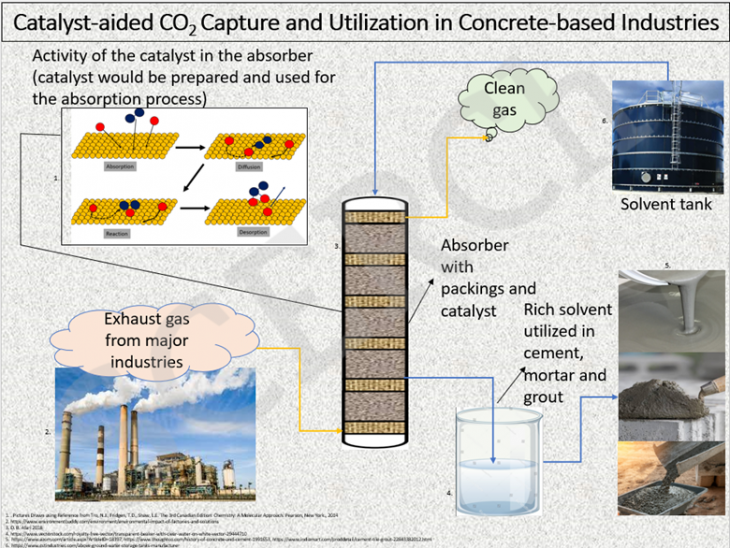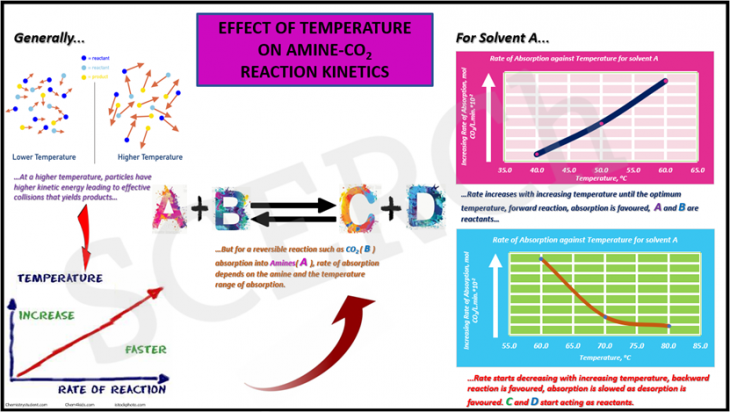
Balancing the Global Carbon Budget with CCS
In the pre-industrial era, the amount of CO2 released into the atmosphere due to the natural geological processes was almost equal to that of sinking back to the land, vegetation, and ocean. It can be said that the carbon cycle was balanced. Due to human evolution especially in the industrial era, human activities create CO2 much faster than natural geological processes, leading to an imbalance of the carbon cycle that directly affects global warming and climate change...
Read More
Carbon Capture Storage and Utilization
Though the post – combustion capture process by absorption – regeneration is the more mature technology in Carbon Capture Utilization and Storage (CCUS), its cost reduction is still necessary and requires immediate attention. The high cost in the capture process relates principally to infrastructure, energy and disposal of the CO2 captured.
Read More
Effect of Temperature on Amine-CO2 Reaction Kinetics
In general, rate of chemical absorption of CO2 increases with increasing temperature. This is because an increase in temperature will raise the average kinetic energy of the reactant molecules. Therefore, a greater proportion of molecules will have the minimum energy necessary for an effective collision that yields the product. This was observed in our experiments for the absorption temperature regime (40 - 60 ºC)...
Read More
Effect of Intermolecular Interaction of Amine on Cp and ΔHvap
The knowledge of intermolecular forces and their strength between molecules of amines is a very important piece of information that one can use to determine the behavior of amines used for capture of carbon dioxide from industrial exhaust gases. In today’s what’s cooking post, we discuss on how the intermolecular forces that hold molecules of the amine together affect its specific heat capacity (Cp) and heat of vaporization (ΔHvap) which in turn, can affect the heat consumption of the amine process.
Read More
Exhaust Gas Dust
Flue gases from coal fired power plants, cement and iron and steel industries consist of impurities such as NOx, O2, and SOx. CO2 is considered as the gas of interest because it needs to be separated and removed from the gas stream. These exhaust gas impurities have varying effects on the stability of amine and capture process in an amine-based post combustion CO2 capture process. In this episode, we will pivot our discussions on the influence of the dust content on amine stability and the process performance in amine-based post combustion CO2 capture process.
Read More